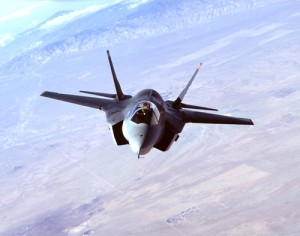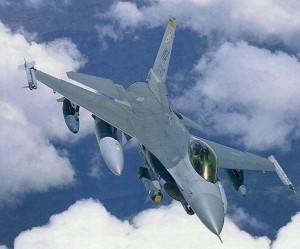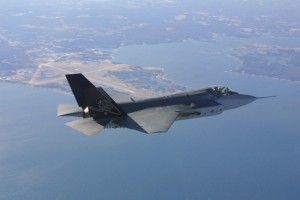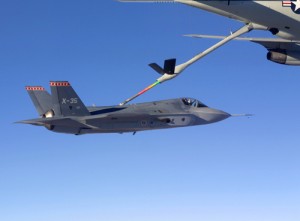 Does is seem unreasonable to you that the American public should expect our leaders to be responsible stewards of the billions of dollars entrusted to them? Assuming your answer to that question is, “No,” consider with me for a moment the lunacy represented by the following two egregious examples of a fiscally brain-dead system.
Does is seem unreasonable to you that the American public should expect our leaders to be responsible stewards of the billions of dollars entrusted to them? Assuming your answer to that question is, “No,” consider with me for a moment the lunacy represented by the following two egregious examples of a fiscally brain-dead system.
 The Commission on Wartime Contracting was established by Congress in 2008 under the model of the Truman Commission, which investigated US government spending during WWII. According to a recent study released by the Commission, corruption and waste have cost the US government billions of reconstruction dollars in Iraq and Afghanistan.
The Commission on Wartime Contracting was established by Congress in 2008 under the model of the Truman Commission, which investigated US government spending during WWII. According to a recent study released by the Commission, corruption and waste have cost the US government billions of reconstruction dollars in Iraq and Afghanistan.
 The report found that “criminal behavior and blatant corruption” were responsible for much of the waste related to the nearly $200 billion spent since 2002 on reconstruction and other projects in the two countries. It did not give exact figures, but cited the Inspector General for Afghanistan Reconstruction report to Congress in January that found efforts were at clear risk because of poor planning and insufficient oversight. Another estimate in the report found that losses to fraud alone in both war zones could be as high as $12 billion.
The report found that “criminal behavior and blatant corruption” were responsible for much of the waste related to the nearly $200 billion spent since 2002 on reconstruction and other projects in the two countries. It did not give exact figures, but cited the Inspector General for Afghanistan Reconstruction report to Congress in January that found efforts were at clear risk because of poor planning and insufficient oversight. Another estimate in the report found that losses to fraud alone in both war zones could be as high as $12 billion.
 “When it comes to oversight of contingency contracting, we’ve been driving beyond the reach of our headlights. Reforms are badly needed,” said the report. “For many years, the government has abdicated its contracting responsibilities — too often using contractors as the default mechanism — without consideration for the resources needed to manage them.”
“When it comes to oversight of contingency contracting, we’ve been driving beyond the reach of our headlights. Reforms are badly needed,” said the report. “For many years, the government has abdicated its contracting responsibilities — too often using contractors as the default mechanism — without consideration for the resources needed to manage them.”
The commission offers 32 recommendations to improve the situation in both Iraq and Afghanistan (where subcontractors employ some 200,000 people), including a decrease in dependence on private security and an increase in competition between subcontractors to lower prices. It also called for a separate agency to oversee the different contractors currently supervised (very  poorly, it would seem) by the State Department, Pentagon and the US Agency for International Development (USAID).
poorly, it would seem) by the State Department, Pentagon and the US Agency for International Development (USAID).
Dust is already gathering on the report, which will fade into history along with the following blatant example of government dysfunction at work.
 According to the Government Accountability Office (GAO) February 24th report to the chairman of the House Armed Services Committee, a set of three reports submitted by the Air Force to Congress in 2010 addressing the service’s fighter aircraft structure lacked key data needed to ensure accuracy, and assumptions about developmental programs have since been proven invalid. Conclusions drawn by the Air Force “reflected previously established service plans and strategic level guidance that were dated by the time the reports were issued.”
According to the Government Accountability Office (GAO) February 24th report to the chairman of the House Armed Services Committee, a set of three reports submitted by the Air Force to Congress in 2010 addressing the service’s fighter aircraft structure lacked key data needed to ensure accuracy, and assumptions about developmental programs have since been proven invalid. Conclusions drawn by the Air Force “reflected previously established service plans and strategic level guidance that were dated by the time the reports were issued.”
 The original Air Force reports determined that effective management of the Joint Strike Fighter (JSF) program could mitigate the service’s projected fighter aircraft shortfall, and that extending their service life and upgrading existing fighters would be as effective as procuring new fighters at 10 to 15 percent of the cost. They also suggested that procuring so-called “4.5 generation” aircraft would not fulfill the service’s mission of converting to an all-stealth fighter fleet.
The original Air Force reports determined that effective management of the Joint Strike Fighter (JSF) program could mitigate the service’s projected fighter aircraft shortfall, and that extending their service life and upgrading existing fighters would be as effective as procuring new fighters at 10 to 15 percent of the cost. They also suggested that procuring so-called “4.5 generation” aircraft would not fulfill the service’s mission of converting to an all-stealth fighter fleet.
Since the Air Force reports were released, the service has announced both good and bad news related to what it projects as a shortfall of 200 fighter aircraft in the mid-2020s. In the near term, that shortfall appears to have been averted because the Air Force’s existing F-16 fleet is in better shape than expected.
 The service had predicted that older F-16s would encounter wing cracks and other structural problems that would require them to be retired early, yet new data suggests the aircraft are salvageable. “Air Force officials have revised their projections and now believe that the wing cracking problem is not as severe as originally projected,” the GAO report states. “As a result, they believe that the near-term fighter shortfall has been mitigated without an additional investment.” The report adds that wing crack data has not yet been certified by the service’s Fleet Viability Board.
The service had predicted that older F-16s would encounter wing cracks and other structural problems that would require them to be retired early, yet new data suggests the aircraft are salvageable. “Air Force officials have revised their projections and now believe that the wing cracking problem is not as severe as originally projected,” the GAO report states. “As a result, they believe that the near-term fighter shortfall has been mitigated without an additional investment.” The report adds that wing crack data has not yet been certified by the service’s Fleet Viability Board.
Uh-oh. Another report is due and a crisis looms. How can the report be ignored (as usual) if it isn’t submitted?
 On the other hand, the Air Force intends to make up the fighter jet shortfall entirely through the acquisition of the F-35 Joint Strike Fighter (JSF), which has experienced significant delays and cost overruns since the Air Force reports were released a year ago. The program was reshuffled last May, when Vice Adm. David Venlet took over as JSF program executive officer, and the Air Force is now planning to acquire fewer F-35s than anticipated in the short term. The GAO report states that the Air Force needs a fully updated JSF baseline in order to make “better-informed aircraft investment decisions.” More information on the cost of maintaining existing fighter aircraft versus procuring new F-15s and F-16s is also necessary to validate the Air Force reports, according to GAO.
On the other hand, the Air Force intends to make up the fighter jet shortfall entirely through the acquisition of the F-35 Joint Strike Fighter (JSF), which has experienced significant delays and cost overruns since the Air Force reports were released a year ago. The program was reshuffled last May, when Vice Adm. David Venlet took over as JSF program executive officer, and the Air Force is now planning to acquire fewer F-35s than anticipated in the short term. The GAO report states that the Air Force needs a fully updated JSF baseline in order to make “better-informed aircraft investment decisions.” More information on the cost of maintaining existing fighter aircraft versus procuring new F-15s and F-16s is also necessary to validate the Air Force reports, according to GAO.
You can think of this as analogous to deciding about what to do with an older model automobile that has served you well but needs some work. Is it more cost effective to fix it up or buy a new one? And relative to the decisions needed with regard to upgrading the USAF fighter force, you have to choose between a completely different new car with a lot more options, and the same make and model you have now, but a new one just off the assembly line. Here’s how that plays out with fighters.
 The Air Force estimated it would cost $9 million to modernize and upgrade existing F-16s, which would extend their life cycle an additional 2,000 flight hours ($4,500 per additional hour). In contrast, procuring a brand-new F-16 with a projected life cycle of 8,000 hours would cost $55 million ($6,875 per hour). It’s a straightforward question: Does spending $2,375 more per hour for a new F-16 make sense?
The Air Force estimated it would cost $9 million to modernize and upgrade existing F-16s, which would extend their life cycle an additional 2,000 flight hours ($4,500 per additional hour). In contrast, procuring a brand-new F-16 with a projected life cycle of 8,000 hours would cost $55 million ($6,875 per hour). It’s a straightforward question: Does spending $2,375 more per hour for a new F-16 make sense?
 The answer, however, is a bit more complicated because GAO calculations compared to those of the Air force show a narrower gap between the cost per additional flight hour for the two options under consideration. The GAO numbers indicate that modernizing existing systems would be significantly more efficient than procuring new fighter aircraft. Even so, after all this reporting going on, we should be able to reconcile the data and come to an informed decision, right?
The answer, however, is a bit more complicated because GAO calculations compared to those of the Air force show a narrower gap between the cost per additional flight hour for the two options under consideration. The GAO numbers indicate that modernizing existing systems would be significantly more efficient than procuring new fighter aircraft. Even so, after all this reporting going on, we should be able to reconcile the data and come to an informed decision, right?
Don’t hold your breath. The GAO report cautions that the calculation is based on the Air Force’s projected acquisition costs — not experimental data — “and does not represent a rigorous, comprehensive cost estimate by GAO.”
 Wonderful. That must foretell another report. And in the midst of this fiasco, an even more significant issue sits like the 500-pound gorilla in the room: the GAO report only addresses the option of purchasing new F-16s rather than upgrading older ones. The current reality is far more troublesome. We have committed to retiring all F-16s and F-15s and replacing them with the F-35 JSF, the most expensive single military procurement package in US history, way over budget and way behind schedule.
Wonderful. That must foretell another report. And in the midst of this fiasco, an even more significant issue sits like the 500-pound gorilla in the room: the GAO report only addresses the option of purchasing new F-16s rather than upgrading older ones. The current reality is far more troublesome. We have committed to retiring all F-16s and F-15s and replacing them with the F-35 JSF, the most expensive single military procurement package in US history, way over budget and way behind schedule.
But never fear. What we can afford to do is never a factor. As in all things fiscal, we’ll just raise the debt ceiling and borrow more in a never-ending cycle of irresponsibility.
The acronym for this is SNAFU. I won’t explain what it means. Not because this is a family website, but because you probably know without any help from me.


